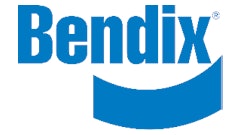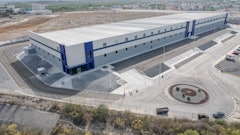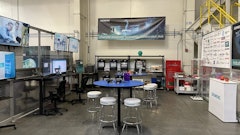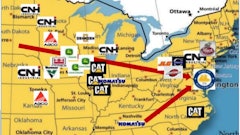Advanced and clean diesel technology is vital to the stability and growth of Wisconsin’s economy, transportation system and environment. To provide a comprehensive compilation of information on diesel’s importance to Wisconsin, the Diesel Technology Forum (DTF) has compiled a fact sheet based on local, state and federal data that examines diesel technology’s role in the state’s transportation and economic systems – “Diesel Powers Wisconsin’s Economy.”
Although best known for its cheese production, Wisconsin's $244 billion GDP comes from a variety of agriculture, manufacturing and service industries. Manufacturing accounts for approximately 14% of this total, followed by trade, real estate and the health care sectors.
Wisconsin has four of the country's 100 largest metropolitan areas. Fifteen Wisconsin metropolitan areas account for 72% of the state's population, 77% of all jobs and 80% of GDP. Clearly Wisconsin depends on clean diesel technology for the production of its goods and the transport of both products and people (see below).
New Clean Diesel Trucks and Buses Have Near-Zero Emissions
In the United States, emissions from heavy-duty diesel trucks and buses have been reduced by 99% for nitrogen oxides (NOx) - an ozone precursor - and particulate emissions. A key part of reducing emissions has been the shift to ultra-low sulfur diesel (ULSD) fuel that has been available since 2006. This change in fuel specification reduced sulfur emissions by 97% – from 500 PM to 15 PM - and enables the use of advanced emissions control technologies. These same clean diesel technologies will be phased in for new off-road vehicles and equipment through 2015.
Existing older diesel vehicles can be retrofitted with these technologies to significantly reduce emissions while greenhouse gas emission reductions are being realized through growing use of hybridization and renewable fuels.
Wisconsin’s Freight and Transit Systems Rely Heavily on Diesel Technology
Manufacturing: Manufacturing accounted for over 17% of Wisconsin's GDP. About 93% of the state's exports are manufactured goods which support 20% of Wisconsin's manufacturing jobs. Machinery (engines and turbines, power cranes and other construction machinery, heating and cooling equipment, and metalworking machinery) is Wisconsin's leading manufactured product. Transportation equipment (motor vehicles, motor vehicle parts) ranks second. Wisconsin counts on the diesel dependent industries to both purchase and transport much of its manufactured products.
Port and Marine: Approximately 40 million tons of goods worth over $8 billion pass through Wisconsin's 15 commercial ports, including products such as coal, iron ore, wood pulp and salt. Wisconsin's commercial ports supported 9,550 jobs, and generated over $1.6 billion in economic output and nearly $462 million in personal income from wages and salaries. The state is connected to the St. Lawrence Seaway and the Upper Mississippi River System and has 14 ferries which support state tourism as well as transporting island residents to jobs, schools and hospitals. Both the ships and the equipment used in the ports are almost exclusively diesel-powered.
Construction: There are more than 36,900 pieces of construction equipment in the state of Wisconsin and the industry employed 120,000 workers in October 2008 - 10% below the peak in 2006. Construction adds $6.5 billion to Wisconsin's GDP.
Agriculture: Wisconsin is one of the top 10 agricultural states in the U.S. Agriculture generates over $59 billion of economic activity in the state and employs more than 350,000. Wisconsin's dairy industry contributes $26.5 billion a year to the state's economy and accounts for almost 40% of all Wisconsin agriculture jobs.
Transit: The Milwaukee County Transit System is the 28th largest transit bus fleet in the U.S., with 410 diesel-powered buses providing rides to approximately 140,000 people. Madison's Metro Transit System was the first system in Wisconsin to add hybrid electric powered buses to its fleet. Fourteen additional hybrids have been added so that now 10% of Metro's buses are hybrids which get 20 to 30% better gas mileage than regular diesel buses while reducing exhaust emissions by 90%.
School Buses: Wisconsin has over 10,000 school buses transporting close to 600,000 students daily. Thanks to a federal air quality grant and one from the state Department of Transportation, about 900 buses from 26 bus companies have been retrofitted across the state.
Ground Transportation: Wisconsin trucks travel across the state's 113,000 mile, carrying almost 90% of all freight tonnage shipped from Wisconsin. Over 77% of Wisconsin communities are served exclusively by trucks, employing over 161,000 or 1 in 15 jobs in the state. The state has 10 freight railroads which carry over 164 million tons of freight across a system of 3,503 rail miles. Amtrak provides passenger service through stations in 22 Wisconsin communities and carries more than 420,000 passengers each year between Milwaukee and Chicago, primarily for one-day business trips. Most, if not all truck and rail transportation is diesel-powered.
Public Health and Safety: The Green Bay Fire Department has 25 diesel vehicles which respond to about 10,000 calls annually. The City of Madison Fire Department has approximately 20 fire and emergency vehicles which respond to over 23,000 calls for service. The state of Wisconsin has 1,200 emergency service vehicles and over 14,000 EMS providers. Fire and ambulance vehicles are diesel powered due to their durability and reliability.
Air Transportation: Milwaukee County's General Mitchell International Airport served 896,158 passengers and is ranked 28th among U.S. airports. The state's 563 airport facilities are critical to many industries which depend on the diesel industry, such as goods movement, agriculture and emergency services.
Emergency Power Generation: Wisconsin depends on diesel generators to provide emergency backup power, especially in the rural north which has a harsher climate. About 75% of U.S. small business owners rate a power outage as a top threat to their business, which reinforces the crucial role of diesel as a back-up power source.
Fact Sheets Also Available For Other States
The Diesel Technology Forum has also compiled additional state fact sheets about diesel technology’s importance in other states throughout the U.S.
Diesel Contributes $480 Billion and 1.25 Million Jobs Annually in U.S.
Nationally, the diesel industry contributes more than $480 billion annually to the U.S. economy, provides more than 1.25 million jobs, and supplies a substantial export-to-value ratio five times higher than the national average, according to a recent economic report released by DTF.
The reports states: “As policymakers look to promote cleaner, more fuel efficient technologies, its use will grow along with other competitive alternatives. Diesel technology’s future value is further enhanced by its suitability for hybrid applications and its readiness to utilize a diverse range of first and second generation renewable and biodiesel fuels.
“National fuel economy standards for cars and light-duty trucks beginning in 2017 are expected to be met in part by an increasing number of clean diesel passenger vehicle choices. Similarly, first-ever fuel efficiency standards for medium- and heavy-duty commercial trucks and buses beginning in 2014 will drive further innovation and efficiency gains in diesel technology as a key compliance strategy.”
More Than 80% of All Freight in U.S. Is Transported By Diesel Power
Other facts outlined in the economic report include:
- Diesel Moves 80% of All Freight: Diesel-powered trucks, trains, ships and intermodal systems moved 83% of freight by value ($11.7 trillion) and 85% by weight (12.5 billion tons) in 2007.
- Diesel Powers Over 70% Transit Buses: Approximately 71% of transit buses and 58% of commuter rail passenger-miles are provided by diesel-fueled trains.
- Clean Diesel Auto Sales Projected To Increase Significantly: Currently, only 3.4% of the cars in the U.S. are diesel-powered. Diesel accounts for a larger share of pickup trucks (13.6%). However, clean diesel sales are increasing and diesel auto sales increased 27.5% during the first six months of 2012 compared to the same period in 2011 (the overall automobile market increased 14.9%). Some analysts predict that diesel passenger cars will account for 10% of the market by 2015.


























